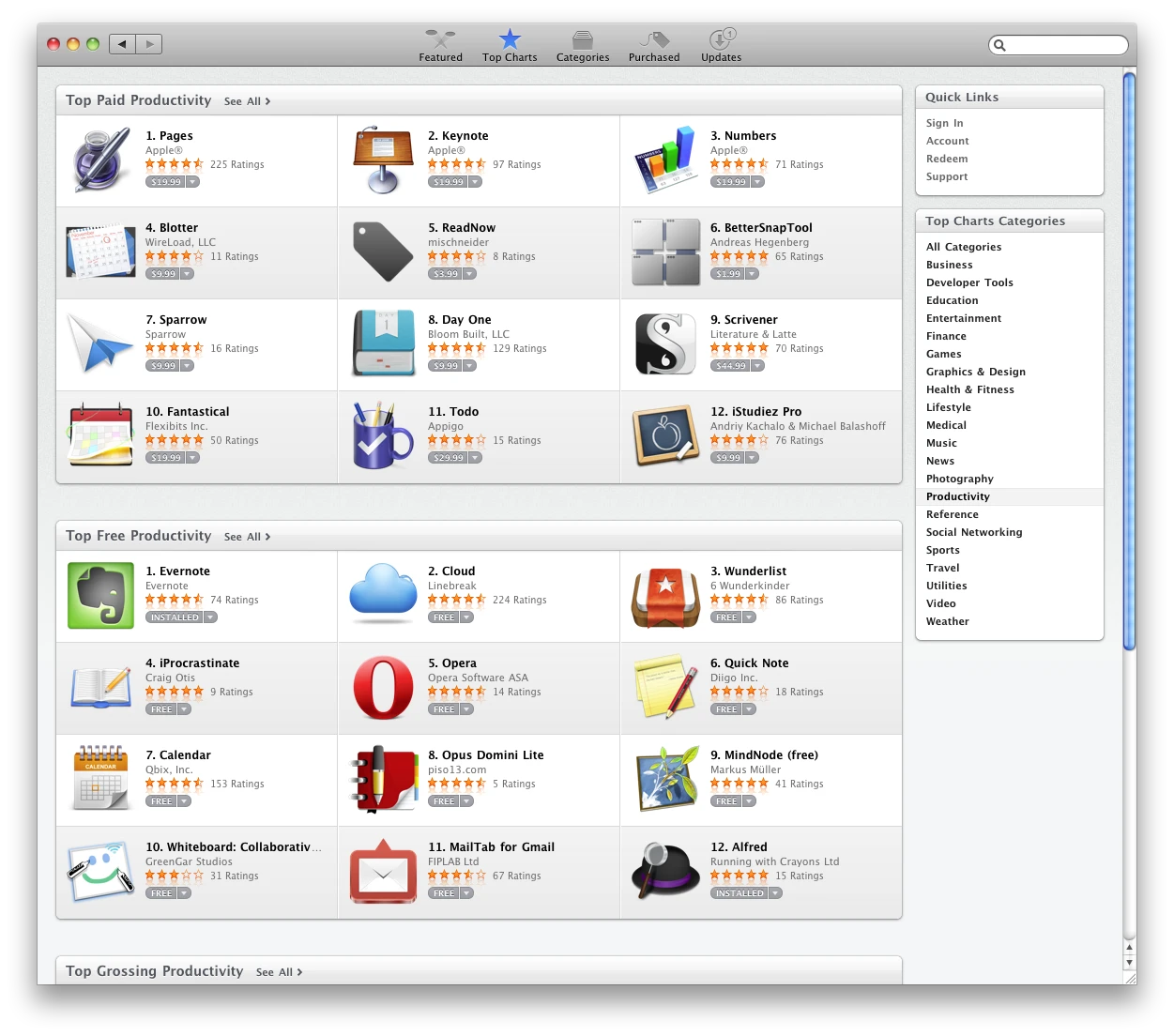In 2011, when Apple launched the Mac App Store, it opened doors for developers. Around the same time, our project, YippieMove, had plateaued because Google released its own email migration tools, taking away a lot of our customers.
Seeing the Mac App Store as a big opportunity, we decided to jump in and create something unique for its launch.
That’s how we came up with Blotter. It was a simple yet smart idea: a calendar that sits right on your desktop wallpaper, always visible but never in the way. It combined functionality with sleek design, but pulled all data from the native macOS applications (Calendar and Reminders), to avoid having to re-invent the wheel.
Blotter was ready for the Mac App Store’s first day and it was a hit. It ranked among the top 10 productivity apps in the US, only beaten by Apple’s own applications briefly. We also made the top 10 store wide in numerous location worldwide. Over the course of a few years, we kept improving Blotter, fixing early shortcuts in the implementation (with a lot of help from Ilya Kulakov). Blotter on the Top 10 list in Productivity, only beaten by Apple’s own applications.

One big issue we faced was the Mac App Store’s rule against charging for app updates. This meant we couldn’t earn from new versions of Blotter unless we released it as a completely new app. This was a massive challenge for us, as it really limited out options. Mind you, Blotter was a few years by now, and there was willingness to pay for an updated version.
Eventually, we moved Blotter into maintenance mode, focusing only on essential updates due to the above limitation.
It took until macOS Sonoma in 2023 for Apple to introduce a feature like Blotter as part of the system, which felt like a nod to what we had built.
From Blotter, I learned a lot about the power and limitations of selling through an App Store. It’s a great way to get your app out there, but it also puts a cap on how much you can grow.
Looking back at the success of Blotter, it really came down to two things:
- Only do one (or few) thing(s), but do it well (the UNIX philosophy).
- Making the UI beautiful.
Looking back at it, I’m not sure we could have done much more with Blotter. The biggest lesson was the lack of recurring revenue. Some macOS apps have tried to solve this by charging a subscription model, but I’m personally not a fan of this Apps I used to love (like Git Tower) adopted this and I stopped using it. While I happily pay for plenty of SaaS products, I just mentally struggle with a recurring charge for a desktop applications.
In chapter 3, which will be the final chapter, I will unpack our experience with bootstrapping Screenly.
Enjoyed this post? Check out my podcast!
If you found this interesting, you might enjoy "Nerding Out with Viktor" - my podcast where I dive deep into tech, entrepreneurship, and security with industry experts.






